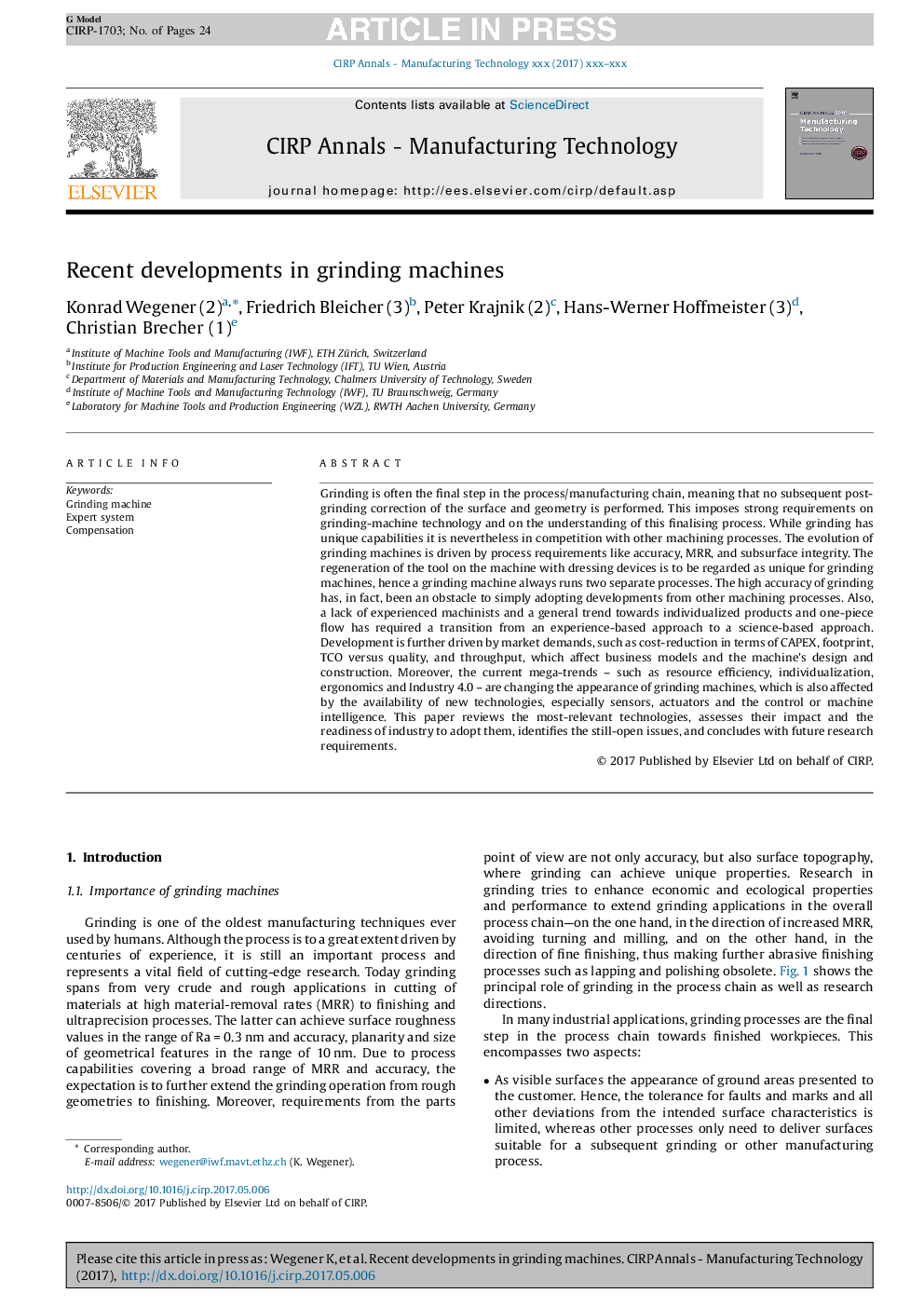| Article ID | Journal | Published Year | Pages | File Type |
|---|---|---|---|---|
| 5466915 | CIRP Annals - Manufacturing Technology | 2017 | 24 Pages |
Abstract
Grinding is often the final step in the process/manufacturing chain, meaning that no subsequent post-grinding correction of the surface and geometry is performed. This imposes strong requirements on grinding-machine technology and on the understanding of this finalising process. While grinding has unique capabilities it is nevertheless in competition with other machining processes. The evolution of grinding machines is driven by process requirements like accuracy, MRR, and subsurface integrity. The regeneration of the tool on the machine with dressing devices is to be regarded as unique for grinding machines, hence a grinding machine always runs two separate processes. The high accuracy of grinding has, in fact, been an obstacle to simply adopting developments from other machining processes. Also, a lack of experienced machinists and a general trend towards individualized products and one-piece flow has required a transition from an experience-based approach to a science-based approach. Development is further driven by market demands, such as cost-reduction in terms of CAPEX, footprint, TCO versus quality, and throughput, which affect business models and the machine's design and construction. Moreover, the current mega-trends - such as resource efficiency, individualization, ergonomics and Industry 4.0 - are changing the appearance of grinding machines, which is also affected by the availability of new technologies, especially sensors, actuators and the control or machine intelligence. This paper reviews the most-relevant technologies, assesses their impact and the readiness of industry to adopt them, identifies the still-open issues, and concludes with future research requirements.
Keywords
Related Topics
Physical Sciences and Engineering
Engineering
Industrial and Manufacturing Engineering
Authors
Konrad Wegener, Friedrich Bleicher, Peter Krajnik, Hans-Werner Hoffmeister, Christian Brecher,
